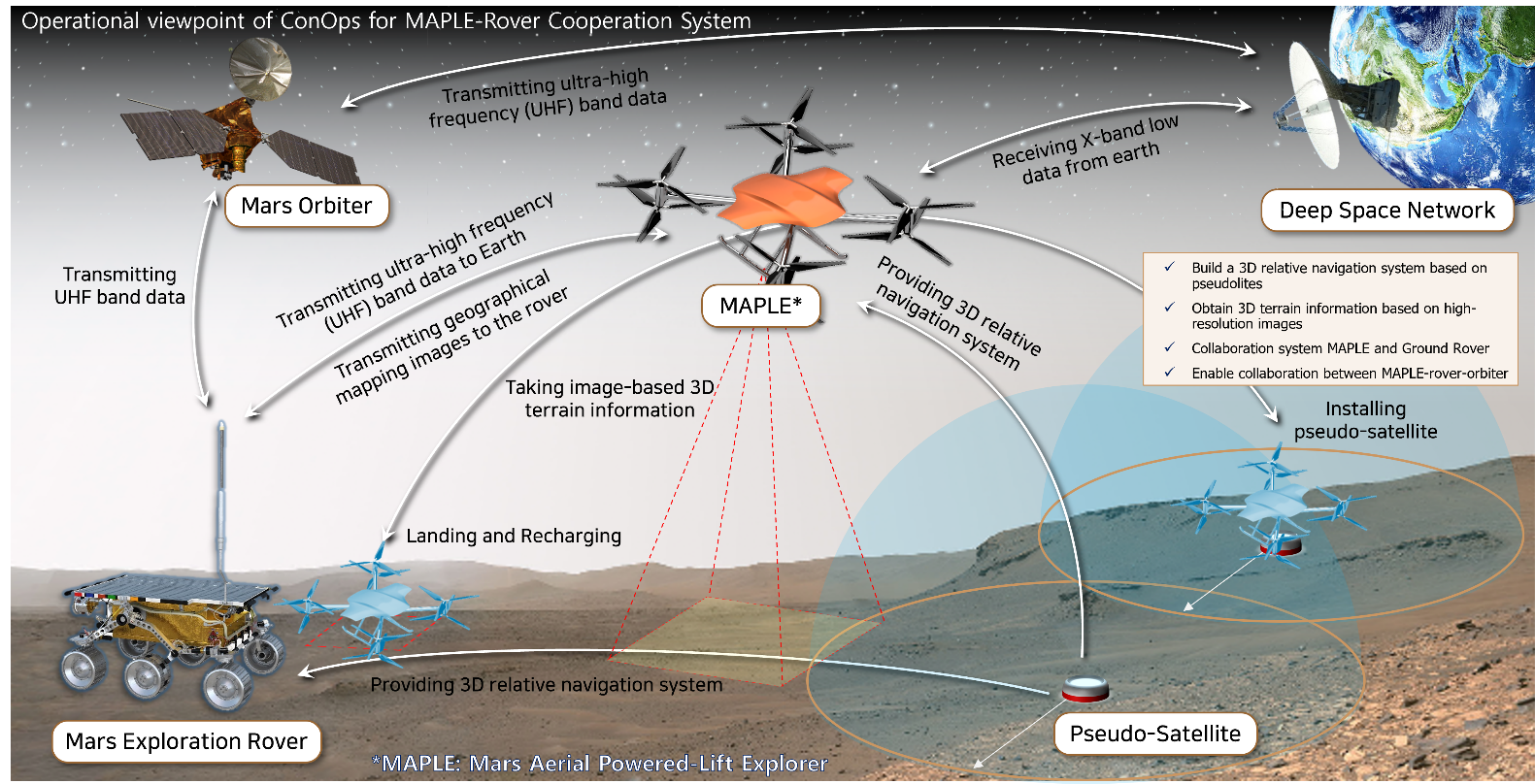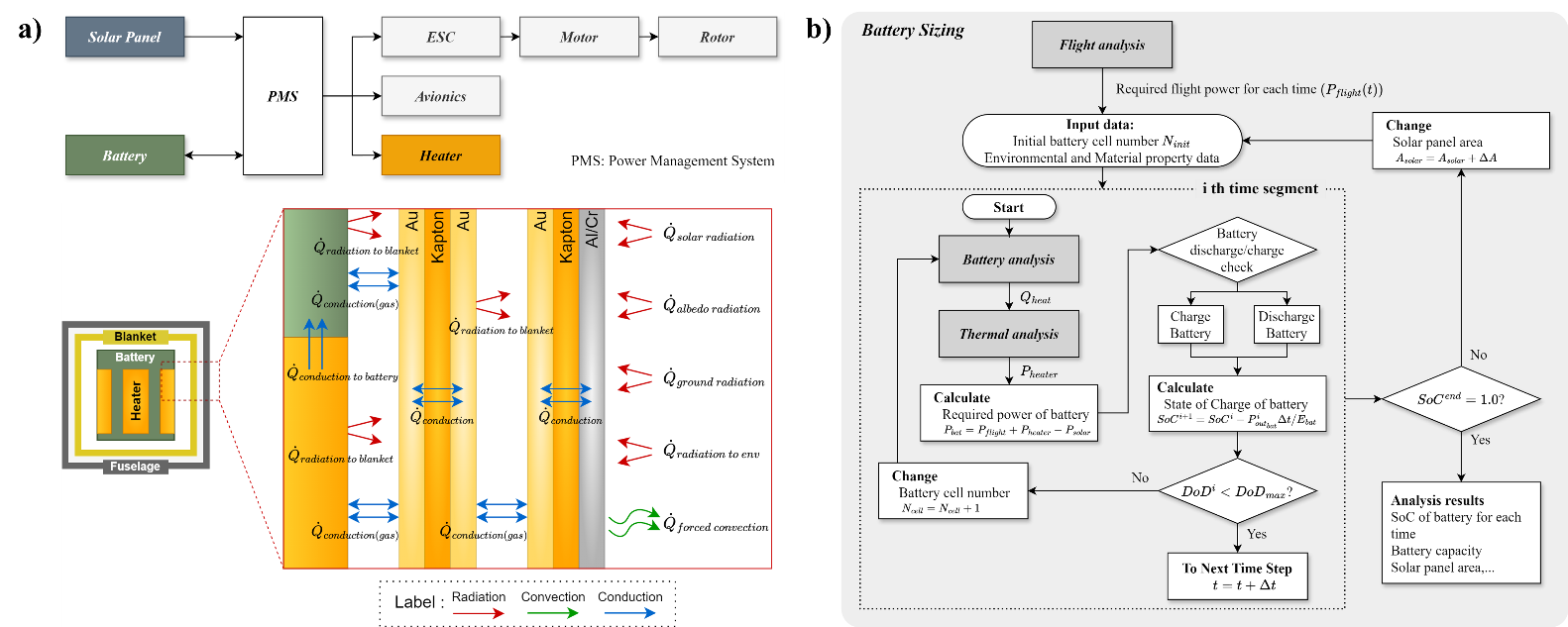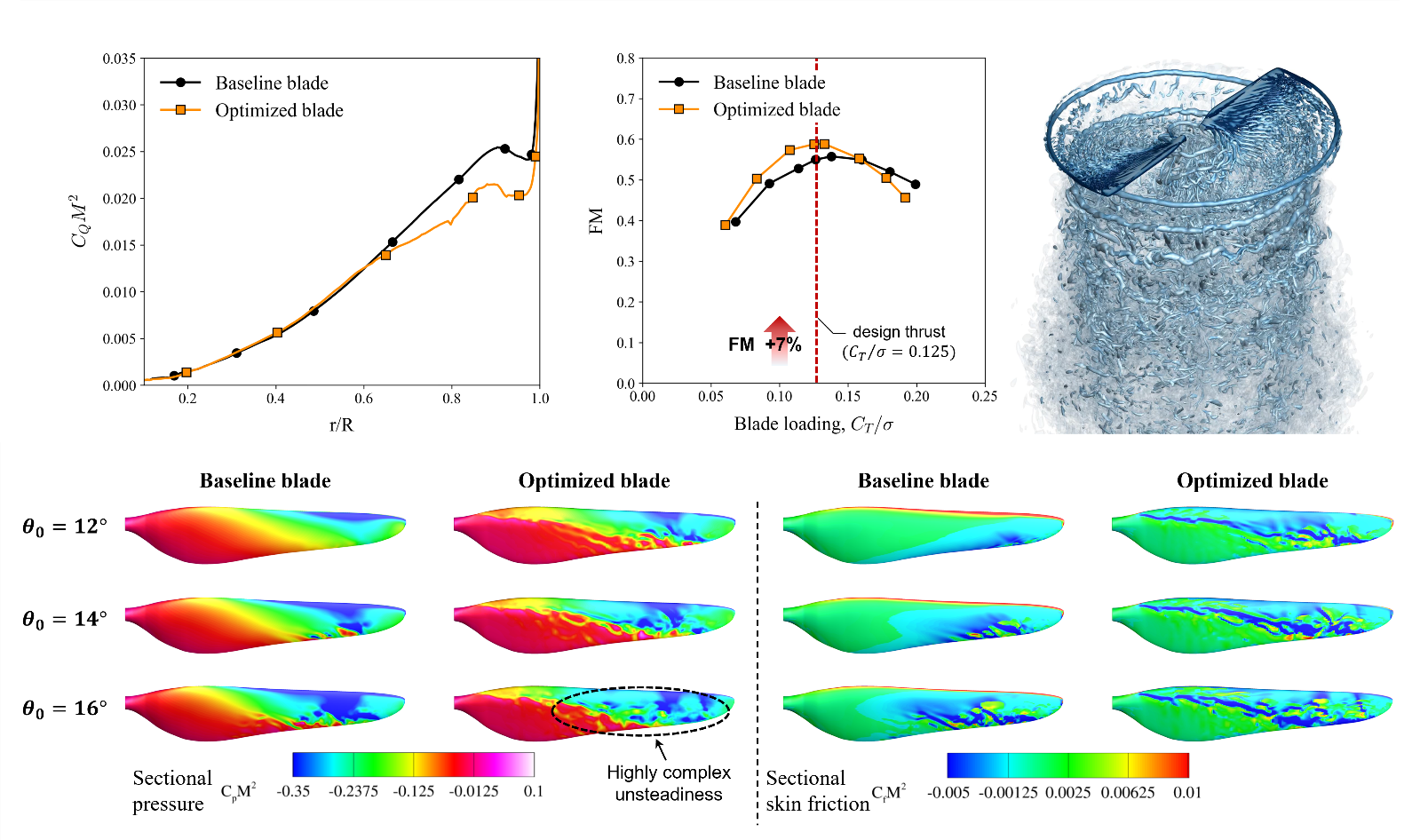Mars Helicopter
ConOps for Mars Helicopter-Rover Collaborative System
To support Korea’s goal of landing on Mars by 2045, our research focuses on developing key technologies for Mars aerial exploration. Aerial platforms can overcome the limitations of orbiters and rovers by offering both high-resolution observation and enhanced mobility. A collaborative concept between a Mars helicopter (MAPLE: Mars Aerial Powered-Lift Explorer) and a rover has been proposed. This collaborative concept serves as a pseudo-satellite to enhance planetary navigation accuracy through a 3D relative GNC (Guidance, Navigation, and Control) system.


Conceptual Design of Mars Helicopter
Due to Mars’ extremely low atmospheric density (~1% of Earth’s) and CO₂-rich composition, aerial vehicle design faces challenges such as low Reynolds number and high Mach number conditions. This study conducts a conceptual design and comparison of three VTOL configurations—coaxial rotor, hexacopter, and stacked quadcopter—under such constraints. Airfoil performance is evaluated via CFD with transition modeling to reflect low-Re conditions. The mission profile is based on the MAPLE (Mars Aerial Powered-Lift Explorer) system. The results provide insights into the feasibility and trade-offs of each configuration for Mars exploration. The stacked quadcopter has been selected as a MAPLE configuration.

Power and energy system sizing process for Mars Helicopter considering thermal management
To account battery thermal management in the extremely cold Martian night, a power and energy sizing process would be needed. A simplified 1D quasi-steady-state thermal model that can be integrated into early-stage design is proposed. The model includes empirical battery heating and solar panel efficiency models, and its results are validated against Ingenuity’s known thermal requirements.


Additionally, research collaboration between AVDL and DLR(German Aerospace Center) has been conducted to optimize airfoils for a Mars exploration helicopter specifically designed for Pit crater missions. To ensure aerodynamic accuracy under low Reynolds number conditions, Direct Numerical Simulation (DNS) is applied for both 2D airfoil and 3D rotor analyses. The results demonstrate how optimized airfoils can enhance rotor performance and contribute to extended mission endurance.


Reference
[1] Park, S., Lee, D., Kwon, S., Yee, K., “ConOps for Mars Airborne Explorer-Rover Collaborative System and Configuration Candidates,” Proceeding of the 2023 KSAS Fall Conference, 2023
[1] Lee, D., Kwon, S., Park, S., Yee, K., “Conceptual Design of VTOL Aircraft for Mars Exploration,” Proceeding of the 2023 KSAS Fall Conference, 2023, pp. 268-269.
[1] Park, S., Park, J., Lee, D., Yee, K., “Power and energy system sizing process for Mars Airborne Explorer,” Proceeding of the 2024 KSAS Space Conference, 2024.
[1] Park, S., Wilke, G., Hong, Y., Yee, K., “Optimization of Airfoil and 3D Rotor Aerodynamics for Mars Helicopter via Direct Numerical Simulation,” Proceeding of the 2025 KSAS Spring Conference, 2025.